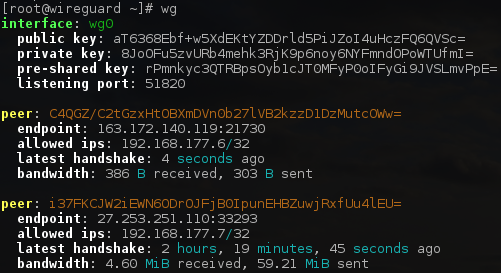In the high-stakes realm of cybersecurity, where every byte matters and milliseconds can be the difference between triumph and disaster, the battle between Virtual Private Networks (VPNs) and WireGuard is nothing short of epic. In this deep dive, we dissect the technical intricacies, benchmarks, and innovations that make WireGuard a formidable opponent to traditional VPNs. Cybersecurity professionals, fasten your seatbelts – this is not your average skirmish.
Virtual Private Networks (VPNs): The Old Guard
VPN Essentials
VPNs have been the backbone of secure communication for decades, establishing encrypted tunnels over untrusted networks to shield sensitive data. Battle-tested protocols like IPsec and OpenVPN have been stalwarts, providing robust security for diverse use cases.
Encryption Protocols and Overheads
IPsec, known for its flexibility, supports various encryption and authentication algorithms. OpenVPN, using SSL/TLS, offers adaptability but introduces additional overhead. These established protocols have been the go-to for securing connections but come with complexities and potential performance bottlenecks.
WireGuard: The New Cyber Maverick

The Rise of WireGuard
Enter WireGuard, a revolutionary VPN protocol designed for simplicity, efficiency, and superior performance. Created by Jason A. Donenfeld, WireGuard has disrupted the VPN landscape with its innovative approach and streamlined architecture.
WireGuard’s Simplicity
WireGuard operates on the principle of simplicity. Its codebase is concise, making it easy to audit and maintain. The protocol discards unnecessary complexities, offering a lean solution that stands out in a world often burdened by convoluted security measures.
Technical Innovation: WireGuard’s New Interface
WireGuard’s Interface Philosophy
One of WireGuard’s groundbreaking features is the introduction of a new network interface. Unlike traditional VPNs that rely on complex configurations and multiple interfaces, WireGuard simplifies this by creating a single, virtual network interface for each peer. This streamlined approach contributes to its efficiency and ease of use.
Benchmarks Speak Louder
In benchmark studies, WireGuard has consistently demonstrated remarkable performance gains over traditional VPNs. Let’s delve into specific benchmarks that showcase WireGuard’s prowess in different aspects.
Benchmark 1: Throughput
A comprehensive throughput analysis, comparing WireGuard against IPsec and OpenVPN, was conducted by AzireVPN. The results were staggering:
- WireGuard’s Throughput: WireGuard outshone both IPsec and OpenVPN, exhibiting significantly higher throughput. This is a critical metric for applications requiring fast and efficient data transfer.
Benchmark 2: Latency
Latency, the Achilles’ heel of many VPNs, was another area where WireGuard flexed its muscles:
- WireGuard’s Latency Performance: WireGuard consistently demonstrated lower latency compared to IPsec and OpenVPN. In real-world scenarios, especially those requiring rapid responses and low communication delays, WireGuard emerges as the victor.
Benchmark 3: CPU Usage
Efficiency isn’t just about speed; it’s also about resource utilization. WireGuard’s impact on CPU usage was scrutinized in the benchmarks:
- WireGuard’s CPU Efficiency: WireGuard exhibited lower CPU usage compared to traditional VPNs. This is a significant advantage, especially in resource-constrained environments or when scaling up VPN deployments.
Encryption Redefined: WireGuard’s Crypto Magic
WireGuard’s Encryption Arsenal
WireGuard opts for a different cryptographic approach, leveraging the Noise protocol framework. The default encryption algorithm includes ChaCha20 for data encryption and Poly1305 for authentication.
Benefits of WireGuard’s Encryption:
- Simplicity and Speed: WireGuard’s cryptographic choices contribute to faster encryption and decryption processes, reducing latency and enhancing overall performance.
- Reduced Attack Surface: The streamlined cryptographic design minimizes potential vulnerabilities, providing a more robust security foundation.
Real-World Scenarios: Where WireGuard Excels
Use Case 1: Remote Access
For remote access scenarios where users connect to a central network, WireGuard’s simplicity and superior performance make it an ideal choice. The single interface per peer simplifies configuration, reducing the likelihood of misconfigurations that can introduce security risks.
Use Case 2: High-Throughput Applications
Applications that demand high throughput, such as video streaming or large file transfers, benefit from WireGuard’s efficiency. The protocol’s ability to handle increased data transfer rates without significant latency makes it a preferred choice for bandwidth-intensive tasks.
Use Case 3: Resource-Constrained Environments
In environments with limited resources, WireGuard’s low CPU usage is a game-changer. Devices with constrained processing power, such as IoT devices or edge computing devices, can maintain efficient and secure communication using WireGuard.
Overcoming Challenges: Where WireGuard Shines
Challenge 1: Network Address Translation (NAT) Traversal
NAT traversal, a common challenge for VPNs, is elegantly addressed by WireGuard. Its dynamic and stateless nature simplifies the traversal of NAT devices, ensuring seamless communication even in complex network configurations.

Challenge 2: Persistent Connections
Maintaining persistent connections is crucial for uninterrupted communication. WireGuard’s ability to handle roaming scenarios, where devices switch networks or change IP addresses, showcases its adaptability and reliability in dynamic environments.
The Road Ahead: WireGuard’s Integration and Adoption
Integration with Linux Kernel
WireGuard’s integration into the Linux kernel has been a key factor in its rapid adoption. This kernel integration streamlines the implementation of WireGuard, providing a native and efficient solution for Linux-based systems.
Cross-Platform Support
While WireGuard gained prominence in the Linux ecosystem, its success has led to cross-platform support. Clients and implementations for Windows, macOS, Android, and iOS have emerged, making WireGuard a versatile solution for diverse environments.
Conclusion: WireGuard’s Triumph
In the arena of VPNs and secure network communication, WireGuard emerges not only as a contender but as a triumph of innovation. Its new interface philosophy, streamlined architecture, and superior performance benchmarks position it as a frontrunner in the cybersecurity landscape.
For cybersecurity professionals, the decision to embrace WireGuard involves weighing its innovative features against specific use case requirements. The benchmarks and technical differentiators discussed in this deep dive provide a foundation for informed decision-making in the dynamic world of secure network communication. As WireGuard continues to evolve and gain traction, its impact on the cybersecurity landscape is poised to be nothing short of revolutionary.
Leave a Reply